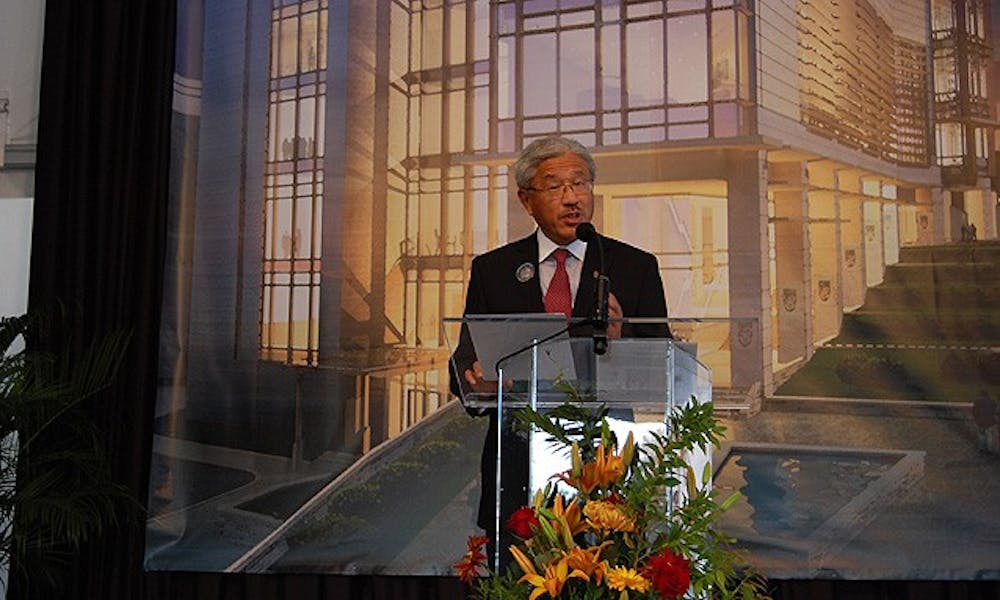University officials gathered Friday afternoon for the groundbreaking ceremony of the Learning Center, the School of Medicine’s newest building.
The event included speeches by top administrators and a performance by Major Groove, an a cappella group composed of medical students. The building is expected to be completed by Winter 2012.
The six-story, 83,000 square-feet structure will contain everything from a 400-seat auditorium to a fitness room, conference rooms and a roof-top terrace. It will be the School of Medicine’s first teaching facility since construction of the Davison Building, which connects the medical campus with the University’s main academic quad.
“From the very beginning, Duke has been known for innovation in medical education, and this building will allow us to take innovation to a whole new level,” said Dr. Victor Dzau, chancellor for health affairs and CEO of the Duke University Health System.
Located near the center of the medical campus, the building will link the clinical and research portions of the medical school, acting as “the connective tissue between the Outpatient Clinic and the Cancer Research Building,” said Dr. Nancy Andrews, vice chancellor for academic affairs and dean of the School of Medicine. She added that she hopes the Learning Center will act as a recruitment tool for prospective students.
The lead gift for the construction of the Learning Center was a $35 million contribution from the Charlotte-based Duke Endowment. Administrators said they hope the Learning Center will strengthen Duke’s position as a leader in medical education, which has seen a shift from classroom-based learning toward health care that is patient-focused and team-based.
President Richard Brodhead noted that the groundbreaking coincides the 100th anniversary of the Carnegie Foundation-commisioned Flexner Report, which proposed a new model of medical education that includes high standards for admission, scientific training and placing medical schools within the research environments of universities.
“We know the way to train people in medical careers is not to take them apart but to train them to work as a team,” Brodhead said.
Dzau said the Learning Center will be built with flexibility that will allow the building to adapt future technologies that do not even exist yet. The sixth floor of the building has 15,000 additional square feet for future expansion. Dzau noted that the building is specifically designed to reflect how medical education is expected to look a decade from now.
“The type of student attracted to Duke is different,” said Duke Endowment trustee Dr. K.D. Weeks, Medicine ’74. “We need to educate that student to not just embrace reform but also lead it.”
Get The Chronicle straight to your inbox
Signup for our weekly newsletter. Cancel at any time.

